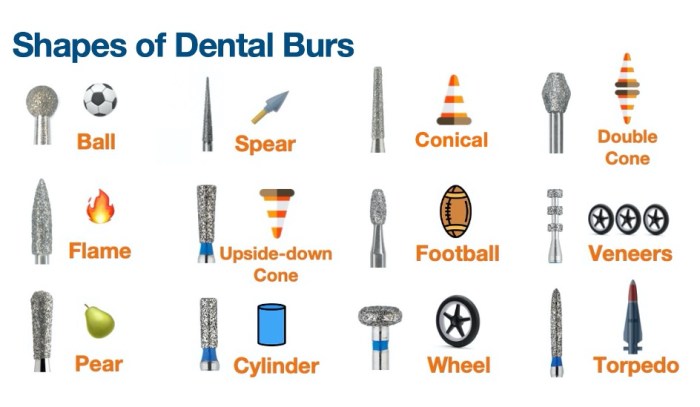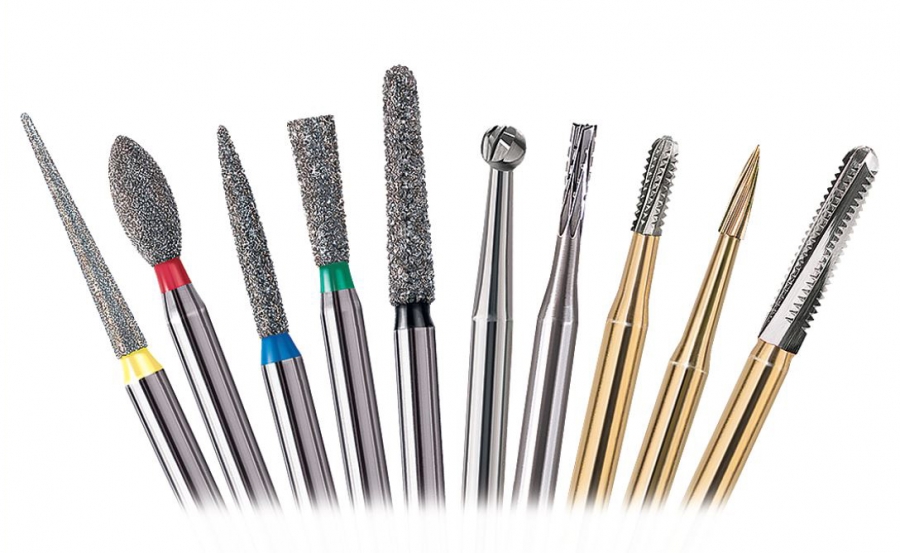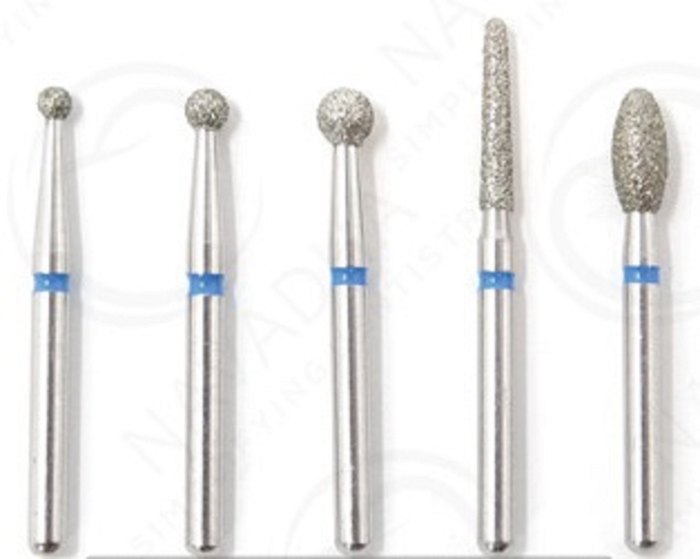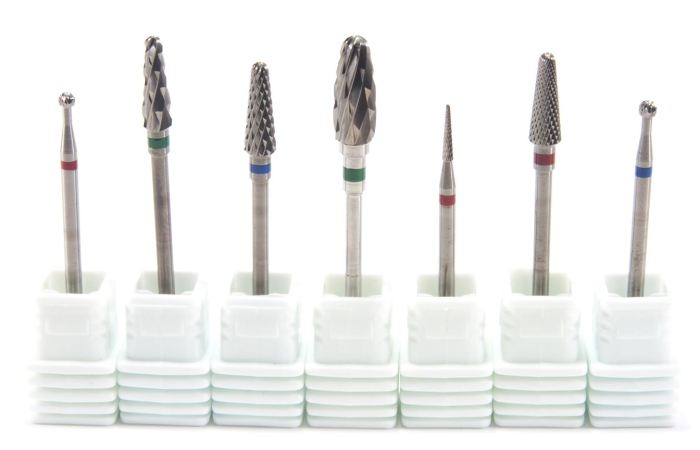Embark on a comprehensive exploration of dental burs names and pictures, delving into their shapes, sizes, designs, and applications. This guide will equip you with the knowledge and visual references to navigate the world of dental burs with ease.
From understanding the intricate details of dental bur nomenclature to gaining insights into their construction and usage, this guide will provide you with a thorough understanding of these essential dental tools.
Dental Bur Nomenclature

Dental burs are small, rotary cutting instruments used in dentistry to remove tooth structure. They come in a variety of shapes and sizes, each designed for a specific purpose.The nomenclature of dental burs is based on a system developed by the International Standards Organization (ISO).
This system assigns each bur a unique number that identifies its shape, size, and material. The first digit of the ISO number indicates the bur’s shape, the second digit indicates its size, and the third digit indicates its material.
Dental Bur Shapes
There are many different shapes of dental burs, each designed for a specific purpose. Some of the most common shapes include:
- Round burs: Used for general cavity preparation.
- Inverted cone burs: Used for creating undercuts and preparing for crowns and bridges.
- Fissure burs: Used for preparing occlusal fissures.
- Flame-shaped burs: Used for shaping the interproximal surfaces of teeth.
- Tapered fissure burs: Used for preparing the buccal and lingual surfaces of teeth.
Dental Bur Sizes
Dental burs are available in a variety of sizes, ranging from 0.5mm to 2.0mm in diameter. The size of the bur is determined by the size of the cavity being prepared.
Dental Bur Materials
Dental burs are made from a variety of materials, including steel, carbide, and diamond. The material of the bur is determined by the hardness of the tooth structure being removed.
Dental Bur Design

Dental burs are precision cutting tools designed for various dental procedures. They consist of three main parts: the head, shank, and neck.
Head
The head of the bur is the cutting end and comes in various shapes and sizes to accommodate different dental applications. The most common head shapes include round, inverted cone, fissure, and flame.
Shank
The shank is the part of the bur that connects the head to the handpiece. It is typically made of stainless steel and is available in different lengths and diameters to fit different handpieces.
Delving into the realm of dentistry, we encounter a plethora of dental burs, each adorned with unique names and distinct shapes. Their precise designs cater to specific dental procedures. Moving beyond the dental realm, we stumble upon a fascinating educational tool—a human torso model with labels . This anatomical marvel meticulously illustrates the intricate structures of the human body, aiding in the comprehension of its complexities.
Returning to our dental odyssey, the exploration of dental burs names and pictures continues, further enriching our understanding of these essential tools in the pursuit of oral health.
Neck, Dental burs names and pictures
The neck is the narrow part of the bur that connects the head to the shank. It provides flexibility and helps to prevent breakage.
Materials
Dental burs are typically made of carbide, steel, or diamond. Carbide burs are the most commonly used and are suitable for a wide range of dental procedures. Steel burs are less expensive but less durable than carbide burs. Diamond burs are the most expensive but also the most durable and efficient.
Cutting Efficiency
The cutting efficiency of a dental bur is influenced by several factors, including:
- Head shape:Different head shapes are designed for specific applications and can affect the cutting efficiency.
- Material:The material of the bur affects its durability and cutting ability.
- Speed:The speed at which the bur is used can affect its cutting efficiency.
- Pressure:The amount of pressure applied to the bur can also affect its cutting efficiency.
Dental Bur Usage
Dental burs are high-speed rotary cutting instruments used in dentistry for various procedures. Proper usage of dental burs is crucial to ensure effective and safe dental treatment.
The technique used for dental bur usage varies depending on the specific dental procedure being performed. Some common techniques include:
Caries Removal
- Use a round bur to create an Artikel form of the cavity.
- Switch to a pear-shaped bur to remove the bulk of the carious tissue.
- Use a finishing bur to smooth and refine the cavity preparation.
Crown Preparation
- Use a cylindrical bur to reduce the tooth structure to the desired depth.
- Use a tapered bur to create a chamfer margin around the tooth.
- Use a finishing bur to smooth and refine the preparation.
Safety Precautions
When using dental burs, it is essential to take the following safety precautions:
- Always wear protective eyewear and a mask to prevent debris and aerosols from entering the eyes or mouth.
- Use a high-volume evacuator to remove debris and aerosols from the operating field.
- Hold the bur firmly and securely to prevent it from slipping or breaking.
- Never use a bur that is damaged or worn.
- Follow the manufacturer’s instructions for proper bur use and maintenance.
Dental Bur Maintenance

Proper maintenance of dental burs is crucial for optimal performance, patient safety, and cost-effectiveness. It ensures the burs remain sharp, free of debris, and sterile, reducing the risk of infections and improving treatment outcomes.
Cleaning Dental Burs
Regular cleaning removes debris and contaminants that accumulate on the bur during use. To clean burs effectively:
- Rinse burs thoroughly with water immediately after use to remove gross debris.
- Use a soft brush or ultrasonic cleaner to remove stubborn debris.
- Lubricate burs with a dental bur lubricant to prevent corrosion and extend their lifespan.
Sterilizing Dental Burs
Sterilization eliminates microorganisms and prevents cross-contamination. Dental burs can be sterilized using:
- Autoclave: High-pressure steam sterilization is the most common method, effective against all microorganisms.
- Dry heat: Sterilization at high temperatures in a dry oven, suitable for burs that cannot withstand autoclaving.
- Chemical sterilization: Immersion in a chemical solution, typically used for burs that cannot tolerate heat.
Factors Affecting Bur Lifespan
The lifespan of a dental bur is influenced by several factors:
- Material: Carbide burs are more durable than steel burs.
- Design: Burs with complex geometries or multiple cutting edges tend to wear out faster.
- Usage: Burs used on hard tissues or for extended periods will wear out more quickly.
- Maintenance: Proper cleaning and sterilization practices extend the lifespan of burs.
Dental Bur Images: Dental Burs Names And Pictures

High-quality images of various dental burs are essential for visualizing their features and understanding their applications. These images provide close-up views of the bur’s head, shank, and neck, enabling dental professionals to make informed decisions when selecting the appropriate bur for specific procedures.
The following table presents an organized collection of dental bur images, along with their corresponding names and descriptions:
Dental Bur Images Table
| Image | Name | Description |
|---|---|---|
 |
Round Bur | General-purpose bur with a rounded head for shaping and smoothing tooth surfaces. |
 |
Fissure Bur | Narrow, tapered bur with a pointed tip for creating grooves and removing caries from fissures. |
 |
Inverted Cone Bur | Cone-shaped bur with a pointed tip for excavating cavities and removing large amounts of tooth structure. |
 |
Flame Bur | Tapered bur with a pointed tip and a curved cutting surface for shaping and contouring teeth. |
 |
Finishing Bur | Fine-grit bur used for smoothing and polishing tooth surfaces after cavity preparation. |
Key Questions Answered
What are the different types of dental burs?
Dental burs come in various shapes and sizes, each designed for specific applications. Common types include round burs, fissure burs, finishing burs, and polishing burs.
How do I choose the right dental bur for a procedure?
The selection of a dental bur depends on factors such as the material being cut, the desired shape of the cavity, and the speed and pressure required.
How do I properly use dental burs?
Proper use of dental burs involves maintaining a firm grip, applying appropriate pressure, and using a water coolant to prevent overheating.